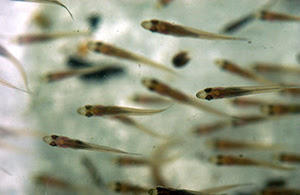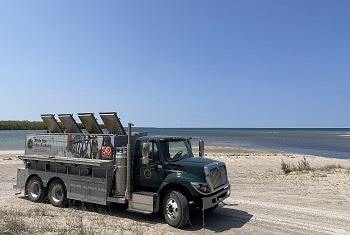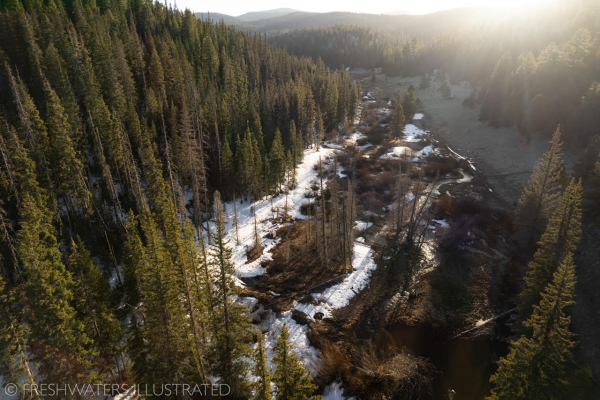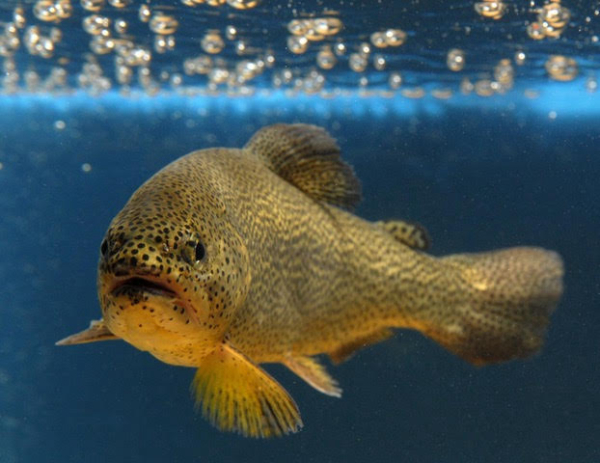Michigan: Walleye Stocking Program Continues to Succeed

Walleye are one of the most popular sportfish in Michigan, but most people already knew that. What most people don’t know is the process the Department of Natural Resources uses to rear walleye and stock them in public waterbodies throughout the state. It’s vastly different then our traditional fish rearing methods.
After the DNR’s Pacific salmon program kicked into high gear in the late 60s and early 70s, the focus shifted toward intensive culture of trout and salmon rather than coolwater species – like walleye. Michigan’s state fish hatchery facilities didn’t really have the means to rear those types of species, but some fisheries managers were interested in what could be done to jump start walleye populations, particularly in Saginaw Bay.
“We had some key staff, Leo Mrozinski and Bill Deephouse, who worked together to develop this idea of using ponds to rear walleye that we could stock,” said Ed Eisch, the DNR’s fish production manager. “They started by using old borrow pits located along the highways that had filled with water.”
As if by magic it was discovered this extensive rearing process – one where not much labor or financial resources was needed – was effective and could be replicated throughout the state.
“It’s kind of a cool concept,” Eisch explained. “You basically take these walleye fry, put them in the ponds, and let them do their thing, which is foraging on plankton. All you really have to do is keep track of the plankton and harvest the fish before the system crashes.”
The ponds often require periodic fertilizer applications to keep the plankton populations up, but for the most part, they require relatively little labor before being harvested.
The DNR uses a consistent process regarding its walleye rearing ponds, starting with the collection of eggs and milt from wild fish located on the Muskegon River and Bay de Noc. The fertilized eggs are then hatched at Thompson, Wolf Lake and Platte River state fish hatcheries. Usually within just a few days of hatching they’re transferred as fry to rearing ponds that are managed by the department’s fisheries field units, often in cooperation with sportsmen’s groups.
“Support from cooperators is critical for our walleye rearing ponds to be a success,” Eisch shared. “We would not be able to rear the number of fish we do if we didn’t have their resources and man power.”
The fry grow in the rearing ponds and are stocked at two different times of the year. Most fish are stocked as spring fingerlings, usually harvested in June or early July. Some ponds keep their some portion of fish for a little bit longer and harvest them as fall fingerlings. But fall fingerlings are more much more expensive to rear, as they require a larger food source – minnows.
“If they don’t have minnows they’ll start feeding on each other as soon as the plankton runs out,” said Eisch. “Keeping them longer is more expensive but we see much better survival rates for fish stocked as fall fingerlings. We either purchase minnows to stock in the rearing ponds or we invest our time to harvest minnows we can put in.”
Many of the walleye fry are marked while in the hatcheries by soaking in a bath of antibiotic called oxytetracycline (OTC). The OTC gets absorbed into their skeletal system. Why? So when we conduct fish surveys or get samples from anglers we can determine which walleye originated in a hatchery versus the wild. The OTC lays down a fluorescent ring on the fish’s boney structures that can be seen in the lab, although not with the naked eye. DNR staff use special microscopes to view the fluorescent rings to determine whether a given fish was stocked or was hatched in the wild.
The DNR has a number of walleye rearing ponds located throughout Michigan. Curious if one is near you? Check out the list below.
Northeast Upper Peninsula
This area has up to three rearing ponds annually; Lakeshore Pond in Chippewa County and Deer and Shelter Bay ponds in Alger County.
Southwest Upper Peninsula
Eight rearing ponds are operated in this area with four managed in conjunction with cooperators. These cooperators include Indian Lake Property Owners Association (Gerometta’s Pond), Straits Area Sportsman’s Club (Beer Pond) and Bays de Noc Great Lakes Sportsfishermen (Peterson Pond and Oil Tank Pond).
Northeast Lower Peninsula
There are three ponds being managed in this area, James Farm Walleye Pond in Alpena County with assistance from the Thunder Bay Walleye Club; Reid Berney Pond located between Alanson and Indian River with support from the Pickerel-Crooked Lake Association; and Fairchild Pond which is managed by the Drummond Island Sportsmen’s Club (with support from the Sault Tribe of Chippewa Indians).
Northwest Lower Peninsula
There are two ponds currently managed in this area: Mason County and I-75. Local partners include the Mason County Walleye Club.
Mideastern Lower Peninsula
There are five ponds in this area; two at Auburn, one at Kawkawlin, one at Au Gres and one at Tawas City. These ponds are some of the most successful in the state and are where the original ponds launched in the 80s were located. Support is provided by the Arenac County Walleye Club and Walleyes For Iosco County. Despite the fact the DNR doesn’t actually stock walleye in Saginaw Bay, and hasn’t since 2005, these two partners believe strongly in helping to enhance inland walleye fishing opportunities all across Michigan.
Southeastern Lower Peninsula
This area has six walleye rearing ponds with support coming from the Lake St. Clair Walleye Association, Camp Dearborn, United States Air Force Selfridge Air Force Base (City of Waterford Parks Department and Oakland County Drain Commission).
Southwest Lower Peninsula
This area has six walleye rearing ponds: Jackson, Belmont (with help from the West Michigan Walleye Club), Muskegon (supported by the White Lake Area Sportfishing Association) and three ponds Wolf Lake State Fish Hatchery. DNR staff in this area also provide fry, fertilizer and technical assistance to the Holland Fish and Game Club’s pond and the Gun Lake Protective Association.
Want to know where all these walleye end up? Visit Michigan.gov/fishing and click on the Fish Stocking Database link in the “Before You Go” section!






